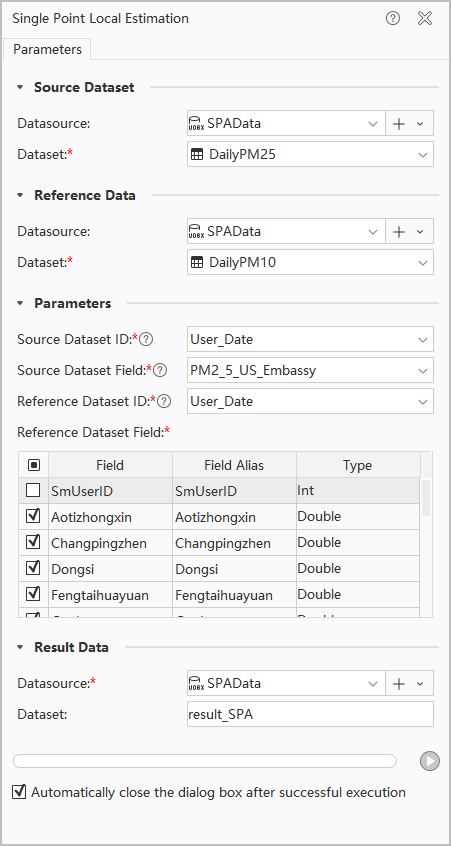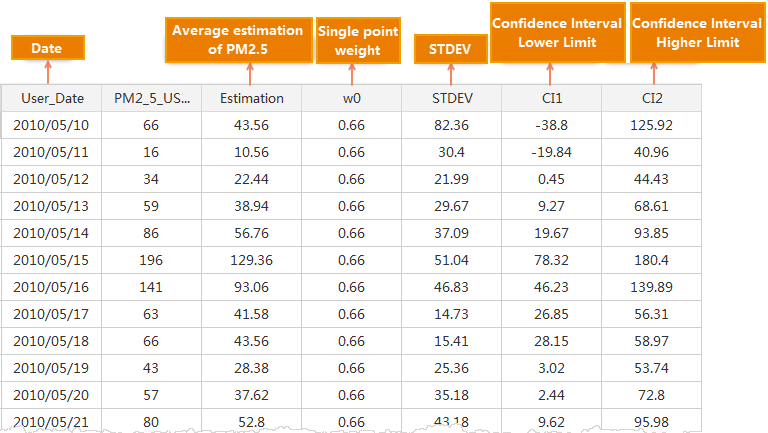Feature Description
Single Point Local Estimation, also known as the SPA statistical inference method, is an unbiased estimation approach for population means using a single valid sample point when comprehensive coverage data of highly correlated covariates are available. When strong correlation exists between covariates and the study object, this model achieves unbiased estimation for the target population.
For instance, with only one PM2.5 monitoring station's data, estimating a citywide average is challenging. However, using PM10 data from 18 stations in Beijing as reference, we can interpolate trends to estimate Beijing's average PM2.5 concentration.
Feature Entry
- Spatial Statistics Tab -> Spatial Sampling and Statistical Inference -> Single Point Local Estimation.
- Toolbox -> Spatial Statistics > Spatial Sampling and Statistical Inference -> Single Point Local Estimation.
Parameter Description
- Source Dataset: Specify the target dataset and its datasource for SPA statistical inference. Case example: Embassy PM2.5 data (multiple days).
- Reference Data: Set reference dataset and its datasource. Case example: PM10 data from 18 Beijing stations (multiple days).
- Parameters:
Source DatasetID: Unique identifier field in source dataset. Case example: Date field in PM2.5 data.
Source Dataset Field: Data field in source dataset. Case example: Field recording embassy PM2.5 observations.
Reference DatasetID: Unique identifier field in reference dataset. Case example: Date field in PM10 data, matching source datasetID.
Reference Dataset Field: Select data fields in reference dataset. Case example: 18 fields recording PM10 observations from multiple stations.
- Result Data: Configure result dataset and its datasource.
- Click "Execute" to run the analysis. Upon completion, the output window will indicate success or failure.
Case Study
Using multi-day PM10 concentration data from 18 Beijing stations and PM2.5 data from the US Embassy station to estimate Beijing's citywide PM2.5 average. Since PM10 and PM2.5 concentrations are correlated (PM10 largely consists of PM2.5), the SPA single point local estimation model can be applied. Data, parameters, and results are shown below:
Sample Data: Click to download SPA Sample Data (requires extraction after download).
Parameters: Open SPAData.udbx in SuperMap Desktop and configure parameters as shown below to perform SPA analysis.

Result Interpretation: The SPA single point local estimation outputs Beijing's PM2.5 average concentration, with results displayed as:




